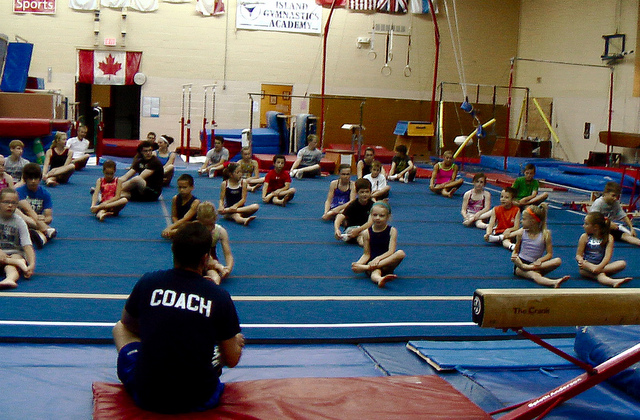Providing an educational service is different than selling a product. When you sell an item, you know that it costs to make and can mark it accordingly to earn a profit.
There is a lot that goes into gymnastic instruction. Thus, it can sometimes be difficult to put a price on the service. When initially setting or raising tuition for classes, there are a number of things to consider. Let this information guide you.
It’s about value
When it comes to business, you want to know what the competition is offering. It is important to do some research to see how your tuition rates compare to other gyms in the area. When you do, note not only the prices, but also the type of classes, class size, and instructor expertise. All these things factor into the cost. For example, gymnastics taught by an Olympic gold medalist will understandably cost more than classes taught by a high school coach due to experience.
When you set your price, focus on the value of the product you are offering. Yes, clients look for competitive pricing, but that is not all. They look at reviews and consider personal recommendations. Reviews will be a good sample set of what others say about your competition, and where you can rise above and beyond. (#4 in this article tells how to get your own reviews.) Don’t let your tuition be dictated just by the rates the competition is charging. If you provide great instruction, clients will be loyal. They also will also be understanding if and when tuition increases.
Consider your costs
You have to be savvy with your business on the whole. When setting tuition and other fees, consider all the costs of running your facility. Ask yourself: What are the indirect, direct (find how to calculate labor costs), and variable costs? What about overhead? These include:
- Rent
- Insurance
- Taxes
- Advertising
- Staff salary
- Administrative help
- Heating/Air conditioning
- Equipment
- Facility upkeep
Then, set a reasonable profit. Remember, you are providing a service. Coaches and instructors are no different from any other business. Building in a profit margin is the thing that defines you as a business. You are not a charity; don’t operate like one. Determine the worth of you and your staff’s expertise, time and the value of all the offerings.
Pricing
Will your gym require a membership in addition to tuition? Some facilities set prices based on membership.
Other gyms vary pricing based on the types of classes or programs. Ranges are determined by:
- Age range (toddler through adult)
- Type of program (recreational to competitive training)
- Form of gymnastics (tumbling, artistic, rhythmic, trampoline)
- Classes and how often they meet (daily, weekly, and number of hours in length)
Discounts can help bring in new or additional clientele. Types of discounts gymnastics gyms provide include:
- Free introductory class. This allows potential clients to try a class to see if it is a good fit. Some gyms with multiple class offerings put limits on how many different introductory classes an individual client can attend.
- Multi-class. Usually a 10 or 25 percent discount on the second or third class for clients taking more than one class.
- Family. Discounts for families signing up more than one child (or adult and child) for classes or programs.
- Holiday or seasonal. Many people like to begin new activities in the New Year, e.g. Offering a discount to clients in December is a great way to bring new faces into the gym for the following year. Consider summer, the start of the school year, etc.
Other considerations
One obstacle gymnastics business owners face has nothing to do with what is provided inside. Parking outside the gym can have a large impact on class size and attendance. If the street parking is difficult or the parking lot is small, it is helpful to do the math, properly plan for attendance and adjust as necessary.
Not every gym will fill every class all the time. Gym owners should think about what “down time” means to their bottom line. If there is space in the gym that is not used during certain days or times, consider offering the space up for alternative ways to bring in cash flow to the business. This includes:
- Private coaching
- Birthday parties
- Cheerleader instruction
- Renting time slots to independent fitness instructors
USA Gymnastics, the national governing board of the sport, has some helpful best practice advice, especially for people just starting a gymnastics business. This can help with financial planning and the business of your facility.
Photo by Rick McCharles

